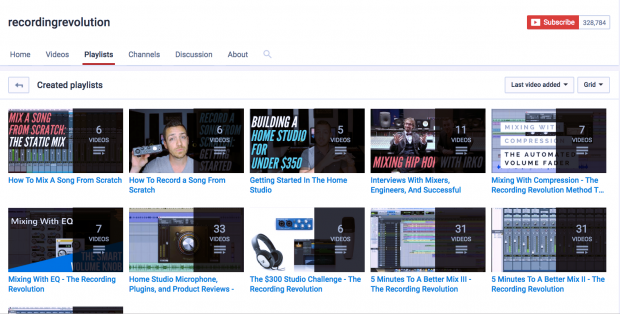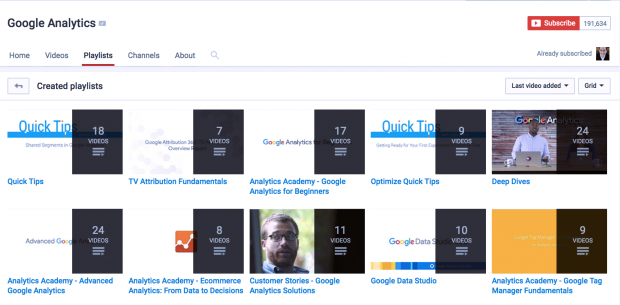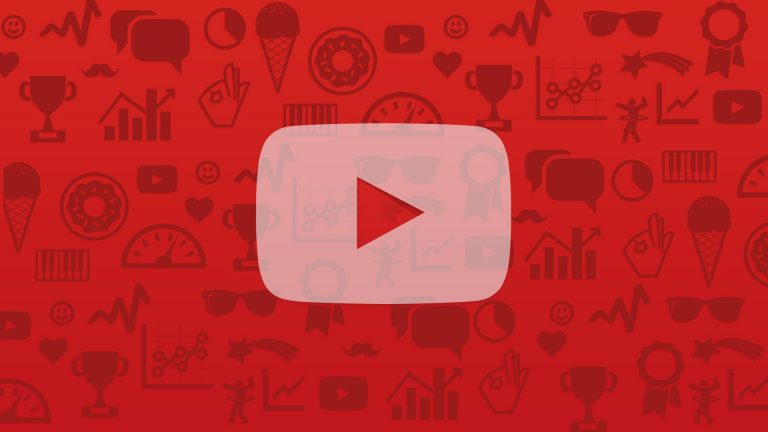
5 ways to get free YouTube subscribers
1. Stop hacking. Start promoting.
If you search “how to get free YouTube subscribers,” you’ll discover a delightful subgenre of social media advice dedicated to ‘hacks and glitches for YouTube.’ These shortcuts—often sold in sensational headlines like ‘how to get millions of free YouTube subscribers’—promise to teach you a hidden trick that will flood your channel with free YouTube subscribers (the truth is YouTube hacks only exist if your definition of a “hack” is a little-known feature).
One of the most popular YouTube tutorials for getting free subscribers comes from a young expert named JustKyptic.
During my research for this post, I have to admit—his headline hooked me. According to Mr. JustKyptic, he’s discovered a YouTube glitch that gets you thousands of free YouTube subscribers in just a few seconds.
I had to watch.
If you watch the video, you’ll learn JustKryptic’s YouTube hack.
As he shows, you can open up your developer tools in Google Chrome. As you may know, clicking “view” > “developer” > “view source” reveals the HTML source code for any webpage.
Next, Mr. JustKryptic clicks on the “YouTube subscriber count” button. And with a flick of his wrist, he changes his YouTube subscribers from 500 to 1000. He warns against changing it higher as YouTube might ban your account.
I’m sure you can spot the error?
JustKryptic is only editing the source code on his own Chrome browser. Only he can see that his YouTube subscriber count has increased—this is not a real change made in YouTube but is simply on his own personal browser.
At the end of the video, he admits this is a prank.
I watched five more of these YouTube hack videos. And most followed the same format: they were a prank.
So if you’re searching for YouTube hacks, you’re likely wasting time. But you still need subscribers.
If you have a new or unknown YouTube channel, you need to gain some sort of traction. Without the attention of YouTube’s algorithm, your videos won’t appear in search results or appear in recommended lists.
So how can you get the organic ball rolling? I asked this question to Gianni “Luminati” Nicassio, a founding member of the indie-band Walk Off The Earth. Gianni used YouTube to catapult his unknown band into a global act, earning over 634 million organic views from YouTube.
His advice for new YouTube channels? Be ruthless about promotion. “If you’re getting started, don’t shy away from the grunt work,” says Gianni. “Creating engaging content is only half of the process. You need to get ruthless and promote, promote, promote.”
“Start with your Facebook friends and shamelessly (but still with some class) ask them to share your video. Then, find out where your audience is hanging out and start targeting those sites. Go to blogs that relate to your content and share your video. Or reply in the comment sections of the related video.”
Your task: Stop wasting time looking for YouTube shortcuts. Instead, build a plan to promote your YouTube channel. Start with manual tasks. And once you have some traction, free YouTube subscribers and organic traffic will begin to appear.
2. Follow the 1×4 content schedule
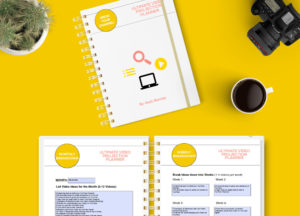
I wanted to know how to build a YouTube following from scratch, so I interviewed Graham Cochrane, the founder of the popular YouTube channel “The Recording Revolution.” Cochrane went from unemployed to creating a 7-figure business around audio engineering tips. YouTube has been a key distribution channel for him.
Cochrane says publishing frequency is key.
“The BEST thing you can do with YouTube (or any content creation for that matter) is to make a lot of content and make it consistently. I’ve made at least one video a week for seven years.”
This frequency helps you retain subscribers (another important metric for YouTube) as well as helps you attract new free YouTube subscribers.
“People come to expect your content. You create a dependable rhythm like your favorite TV show. You know it comes on every week. Plus, when you create more content you increase the number of places people find you online. Instead of seeing your brand for one or two YouTube searches, you start to appear again and again in search results.”
A simple formula that works is this: 1×4. Publish four YouTube videos every month. That breaks down to one video every week. It’s an easy number to remember and you’ll soon see new YouTube subscribers trickling in.
Your Task: Commit to a publishing schedule. An easy formula: one YouTube video every week for a total of four a month.
3. Stop talking. Start delivering.
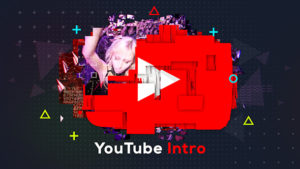
YouTube explicitly states: “channels and videos with higher watch time are more likely to turn up in search results and recommendations.”
How can you increase your watch time? There are lots of tips and tricks online. But the most important principle is this: value your viewer’s time.
According Gianni Nicassio (the viral master I mentioned earlier), you need to deliver value right away. “We’ve found that the first eight seconds of your video are the most important. The click-away rate in those precious seconds is staggering. If you make music videos, start playing music right away. If you are teaching something or explaining a product, start delivering information.”
Nicassio recommends you skip straight to the content and then promote your products at the end. “Don’t tell people about your day, don’t talk about other videos that you’re making or where to buy the song. Just play the song and tell them the supplementary info after the song or in the description.”
Your Task: Shorten your intro. Skip the flashy intro and theme music. Make sure the first eight seconds of every video hook viewers.
4. Convert searchers to subscribers with playlists
You work hard to acquire a first-time viewer. The viewer needs to search for a relevant keyword, see your video in YouTube’s results, and click your result. To turn these casual viewers into subscribers, use YouTube playlists. These boost content consumption, retain subscribers, and boost your watch time.
Instead of creating miscellaneous playlists, create a track of content for new users to watch. In other words, treat your viewers as a cohort, segmenting your audience into groups of users that will move through your content.
Create playlists for three types of cohorts:
- New viewers—what content should a new viewer watch first? I recommend creating a YouTube playlist that says. “New to this YouTube channel? Watch these first.” This playlist needs to introduce the viewer to your channel and deliver your best, funniest, or most helpful videos that will convert them from a searcher to a subscriber.
- Task-orientated viewers—If you offer educational content, a large portion of your audience will be looking to solve specific problems. This might be learning a specific skill or fixing a problem. Cochrane (the YouTube expert quoted above), for example, has specific playlists that help his audience complete different music tasks. These playlists increase content consumption as well as remind people that your channel is a good place to look later if they encounter a challenge. You can see Cochrane’s playlists below or by clicking here.
- Topic-focused viewers—By creating playlists that comprehensively cover a specific topic, you’ll attract one of the most profitable type of viewers: content bingers. These viewers are looking for collections of videos on a specific topic and will methodologically work their way through your playlists. A good example of this comes from Google Analytics’ YouTube channel. You can watch a collection of videos on “TV attribution,” “Google Data Studio,” or master the basics of “Google Tag Manager.”
It’s easy to create a playlist in YouTube.
- Start with a video you want in the playlist
- Under the video, click add to
- Click create new playlist
- Enter a playlist name
- Use the drop down box to select your playlist’s privacy setting. If it’s private, people can’t find it when they search YouTube
- Click create
Your Task: Create YouTube playlists based on three viewer cohorts: first-time viewers; task-orientated viewers; and topic-focused viewers.
5. Expand your search net with Pinterest

Most of your subscribers will discover your channel by either searching in Google or via YouTube’s search bar. Pinterest is also a visual search engine, making it a perfect match for your YouTube strategy.
Not every business or brand is right for Pinterest. To determine whether your customers live on Pinterest download our helpful audience worksheet.
- Hire a designer to turn a few of your best YouTube videos into Pinterest-friendly images. For example, if you run a YouTube cooking channel, you might have a Pinterest visual that offers tips for proper knife techniques or quick tips about baking. On each visual asset, link to your YouTube channel and tell people they can watch the full video there.
- Collect these graphics and create an SEO-focused Pinterest collection. For example, you could turn your topic-focused playlist into a Pinterest collection. Target a high-volume keyword with your Pinterest collection—such as “Healthy summer recipes” or “Photography 101 tutorial.”
- Consider investing some budget in Pinterest ads. They are quite effective and will help boost your visibility. This is optional as people will naturally discover your Pinterest collections via search.
Your task: Build SEO-focused Pinterest collections that link back to your YouTube channel.
Click Here To Buy Youtube Subscribers



